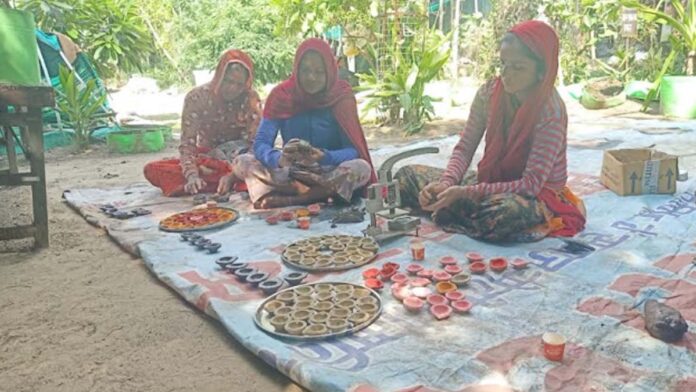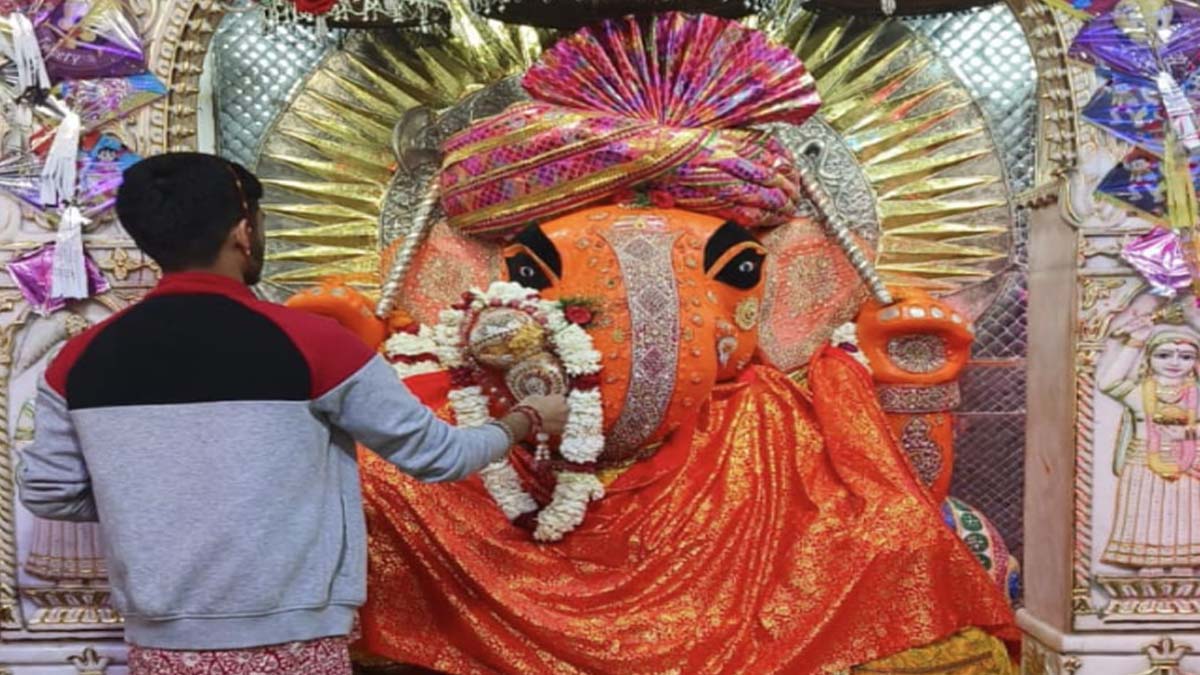Jaipur. This Diwali, cow dung lamps from Jaipur, Rajasthan, will be among the 2.6 million lamps lit in every corner of Ayodhya. These lamps are being prepared in various cow shelters. Dr. Acharya Rajanand Shastri, President of Shri Ram Lalla Ayodhya Ji Seva Samiti Ayodhya Dham, arrived in Jaipur and observed the lamps being made at the Shri Pinjrapol Gaushala on Tonk Road. He stated that 2.6 million lamps will be lit in Ayodhya this year.
Thousands of these cow dung lamps are being prepared at the Vedic Plant Research Center of the Pinjrapol Gaushala in Sanganer, Jaipur. When lit, these special lamps will spread not only light but also the fragrance of the havan material. On this occasion, Shastri highlighted social harmony, cow service, and the preservation of Indian culture, stating that cow service is not only a tradition but also the foundation of humanity and environmental protection. Lamps are being made from cow dung in ten cow shelters including Pinjrapol in Jaipur city.
This Diwali, lamps made from cow dung will glow in ten cow shelters in Ayodhya, including Pinjrapol in Jaipur city. For this, at the plant center of Shri Pinjrapol Cow Shelter in Sanganer, women are preparing special lamps by mixing cow dung with a mixture of herbal powder (reetha, black turmeric, asparagus, jatamansi, ashwagandha, sadabahar, atibala), black soil and mustard oil. When these are lit, along with the light, one will feel the fragrant scent felt during havan.
Five lakh cow dung lamps will be sent to Ayodhya.
Atul Gupta, President of the Vedic Medicinal Plant Center, which operates at the Shri Pinjrapol Gaushala, stated that 2.6 million lamps will be lit in Ayodhya this Diwali. An order has been received to send five lakh cow dung lamps, being prepared in ten Gaushalas, including Pinjrapol, to Ayodhya.
Lamps will be made from seven herbs
Atul Gupta explained that the speciality of these lamps is that they are made from cow dung and special herbs. These herbs include soapnut, black turmeric, asparagus, jatamansi, ashwagandha, evergreen, and atibala powder. The women preparing the lamps explained that to strengthen them, they are coating them with black clay mixed with mustard oil, which is also mixed with glue, so that these lamps can be used for celebrating the festival with strength.
The goal is to make 25,000 lamps daily.
Atul Gupta, president of the Vedic Medicinal Plant Center, which operates at the Pinjrapol Gaushala, said that a team of women artisans is working day and night to create this special type of lamp. Five groups of 11 women each from the self-help group are also engaged in this work. The goal of these 55 women is to produce 25,000 lamps daily.
Burning lamps will give the feeling of havan
These lamps are being decorated with natural colors, using dried flower petals from the cowshed’s nursery. These lamps, being crafted in Jaipur, will be unique, conveying the message of environmental protection and providing the experience of a havan (sacred fire ritual). When lit, these lamps, prepared with a special blend, will emit light and a fragrant scent reminiscent of a havan (sacred fire ritual).
It is noteworthy that 2.6 million diyas will be lit in Ayodhya for the Deepotsav event to be held on the banks of the Saryu River. This will be a special occasion when lamps prepared in Chhoti Kashi will illuminate every street of Ayodhya to mark the return of Lord Rama from exile. The Pinjrapol Gaushala in Sanganer, Jaipur, has received the order for this work. Five lakh of these lamps will be prepared by 10 different Gaushalas in Jaipur and sent to Ayodhya.





